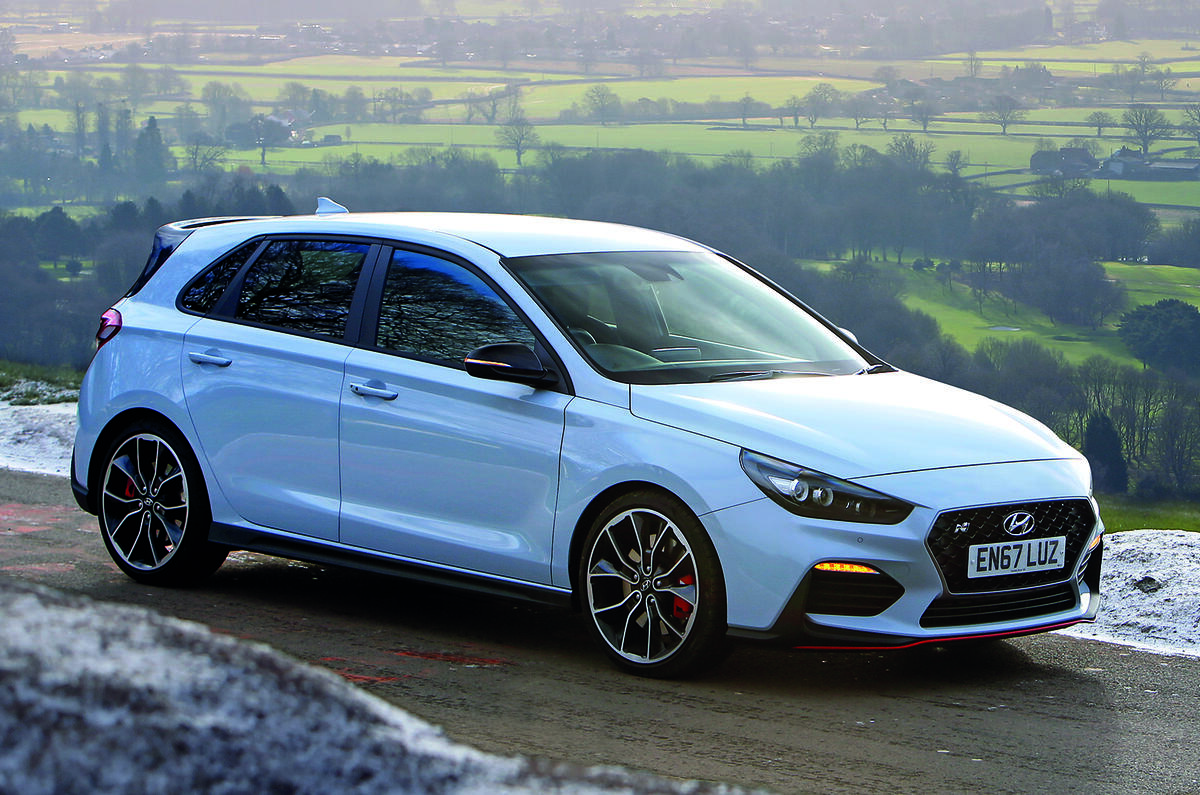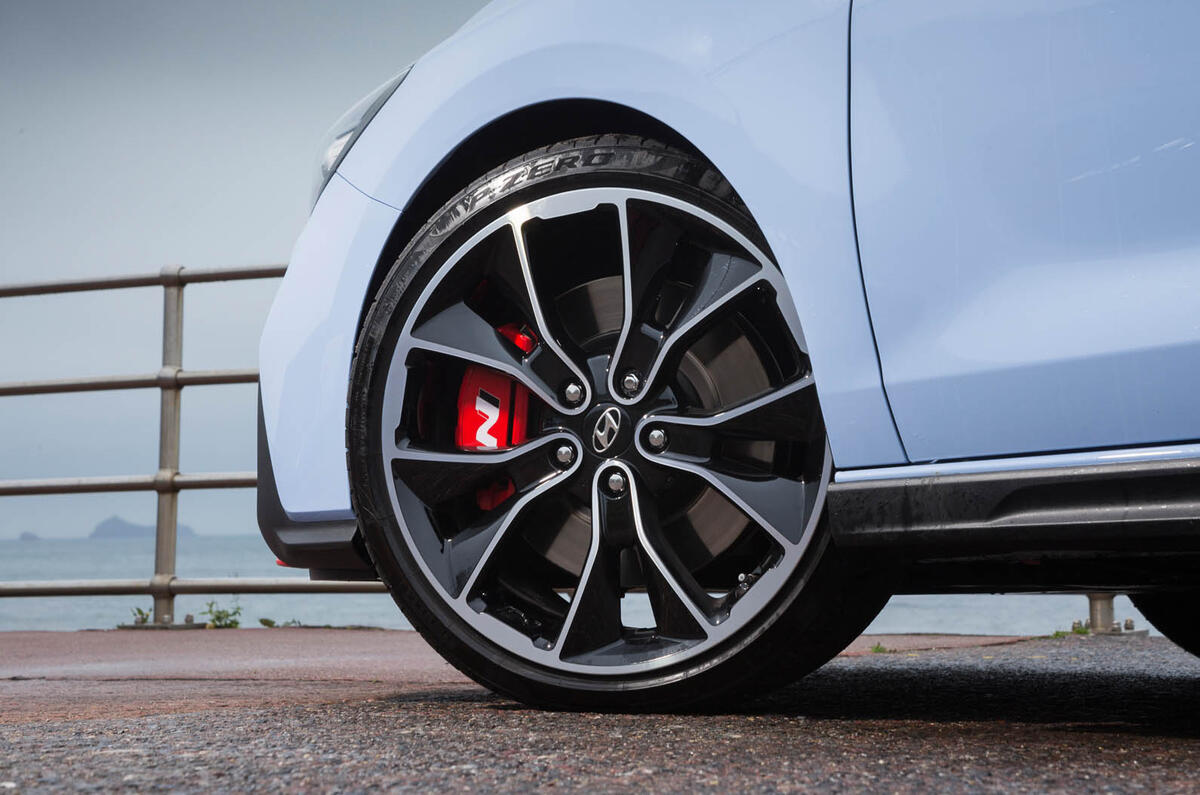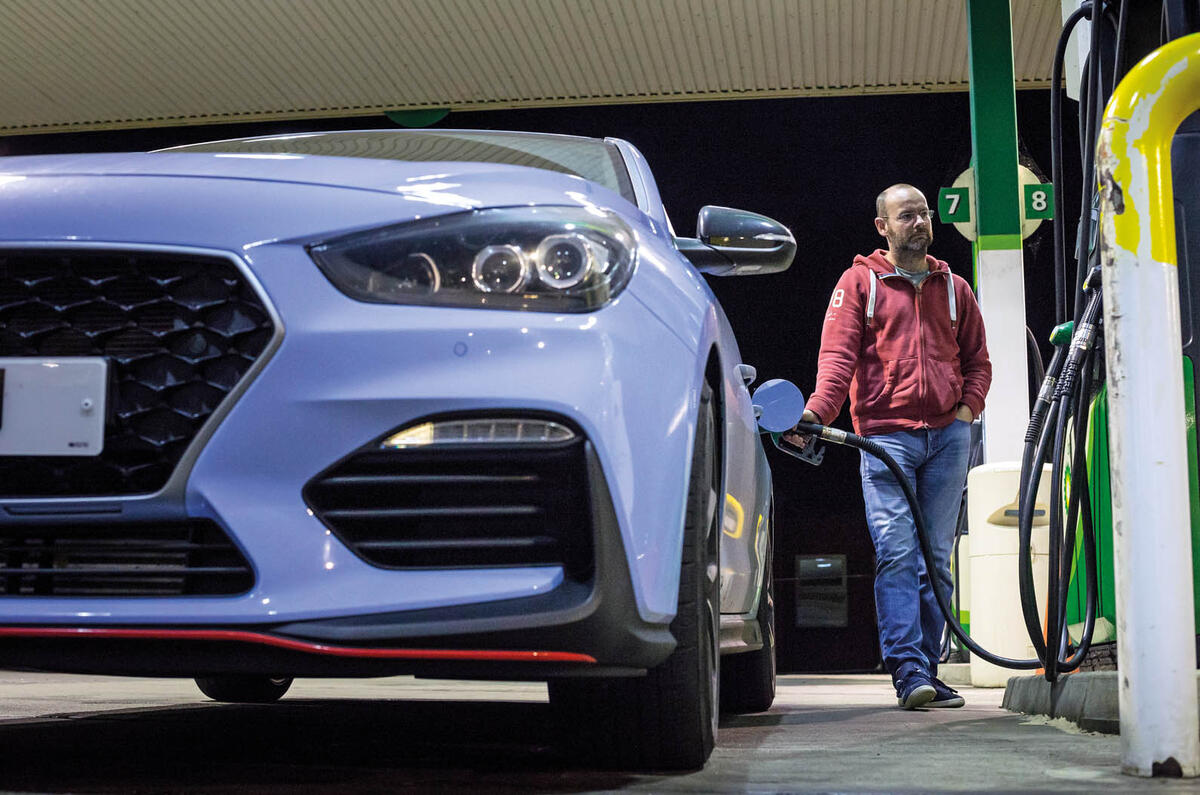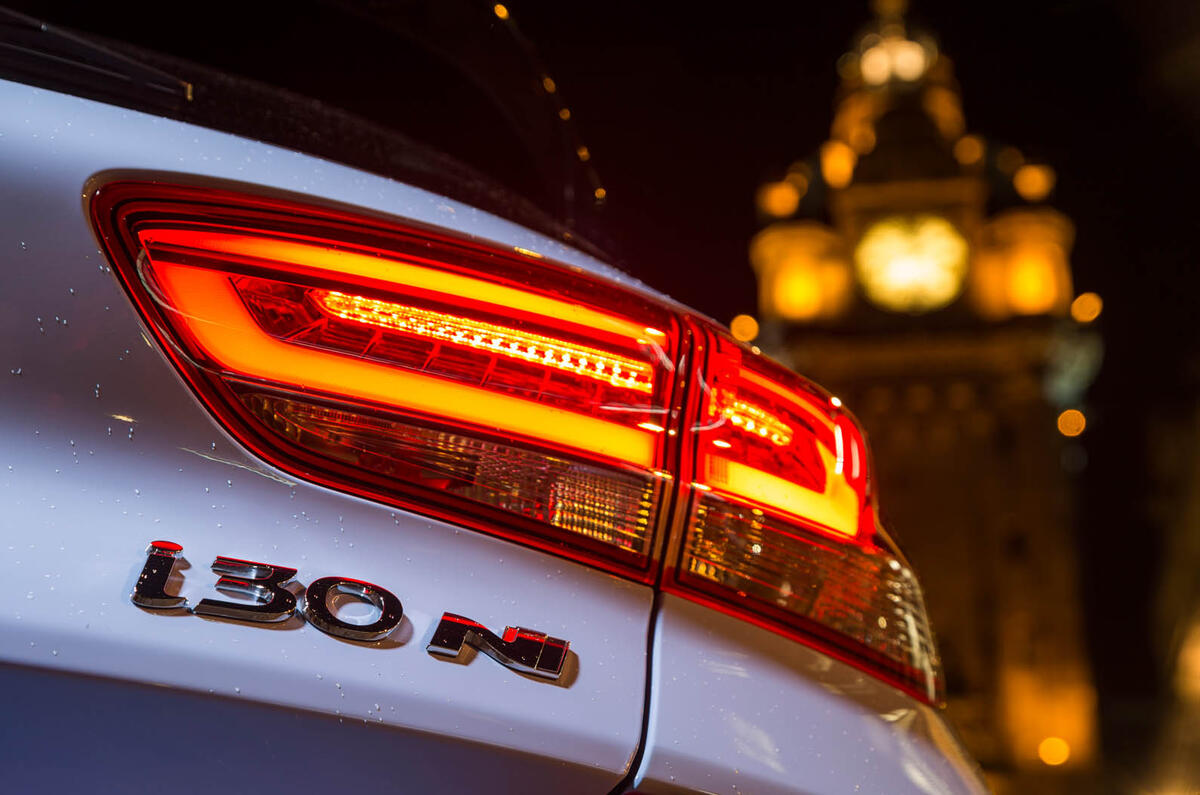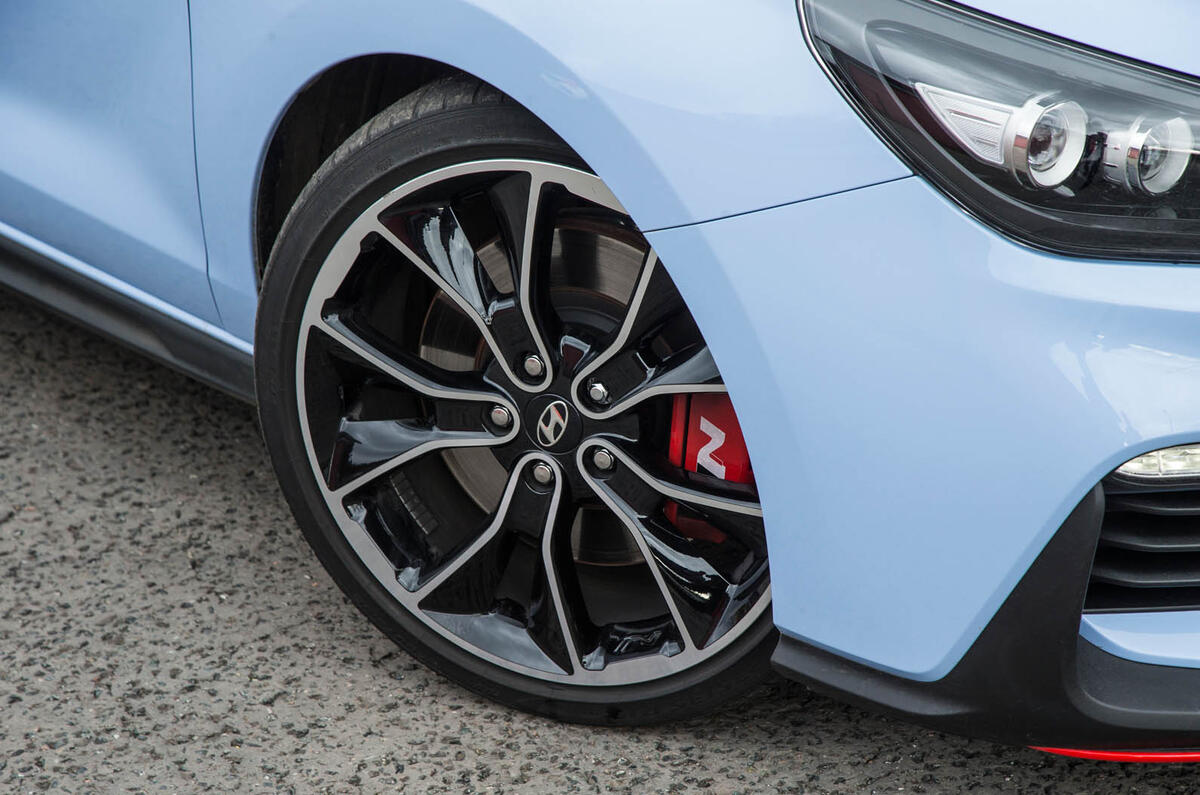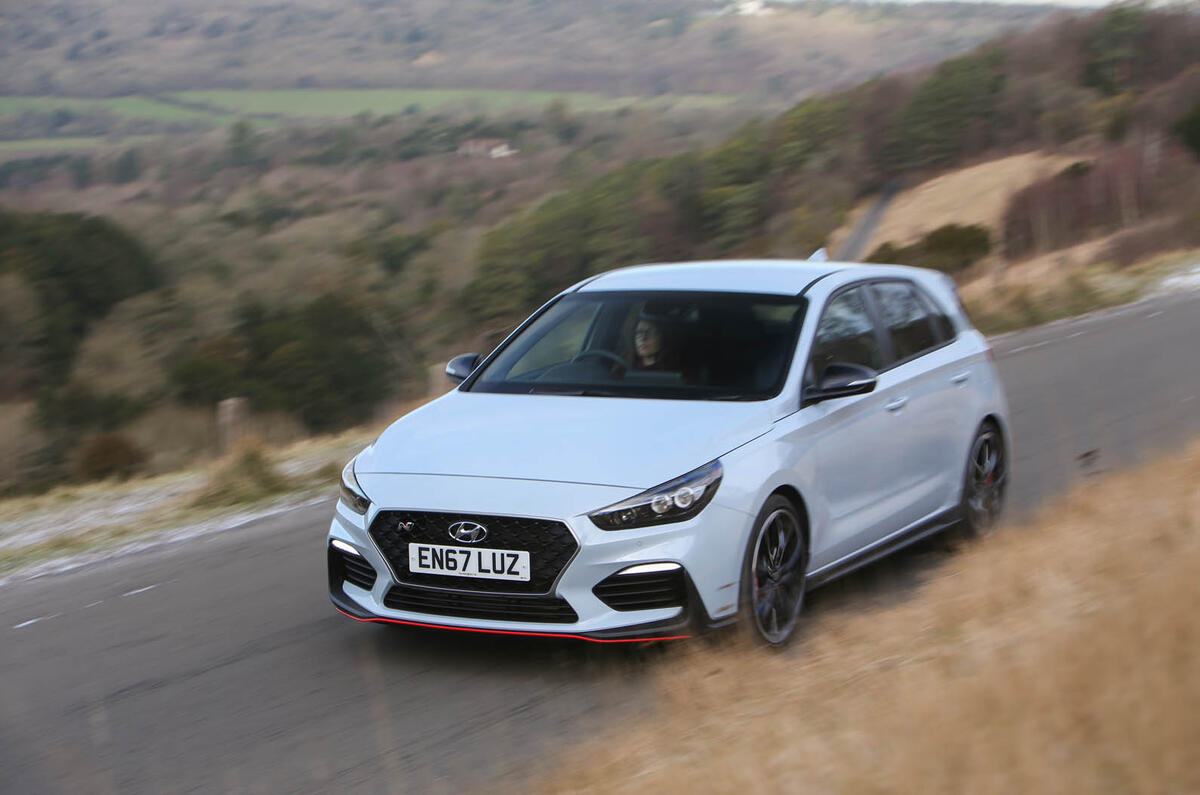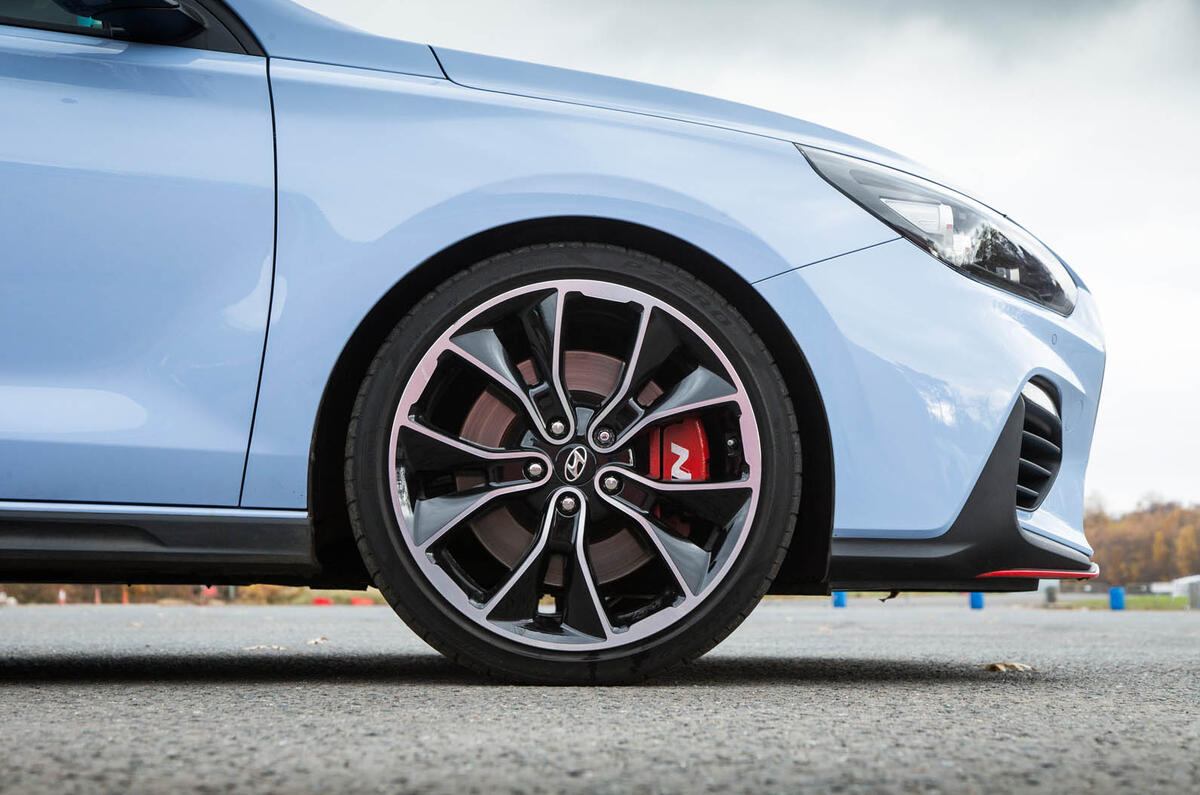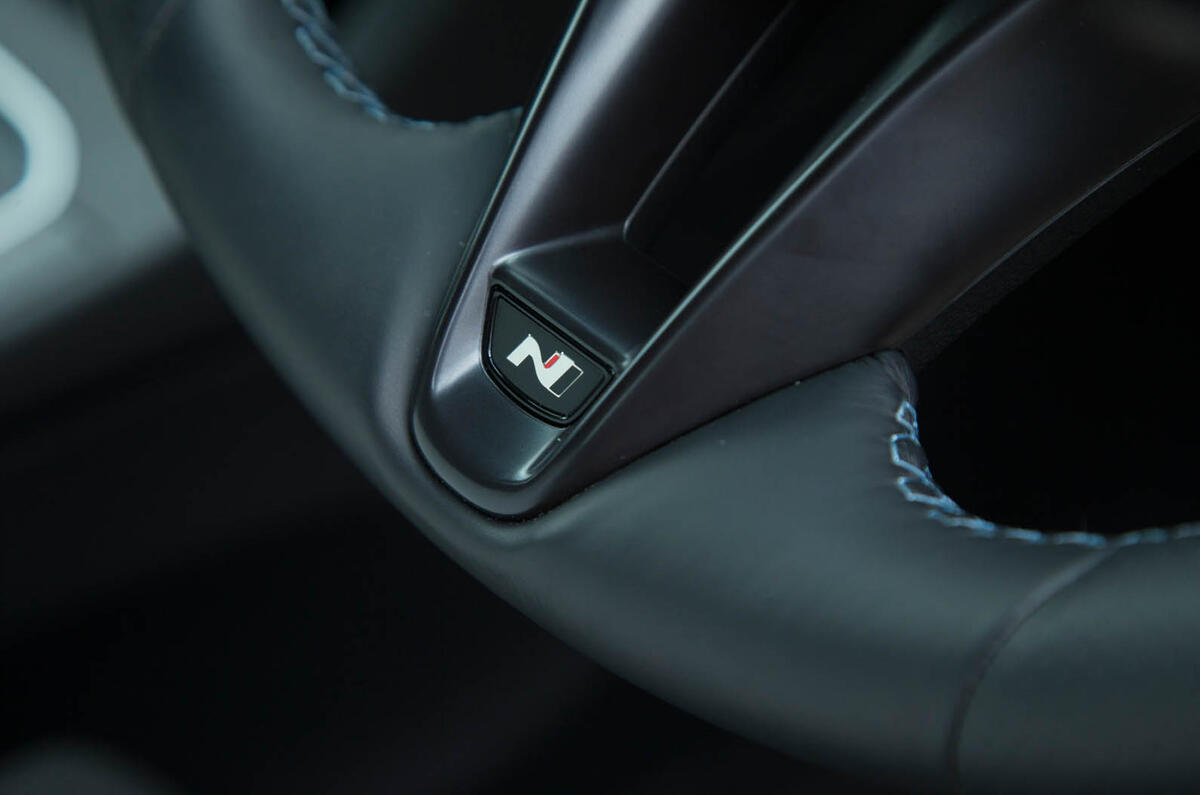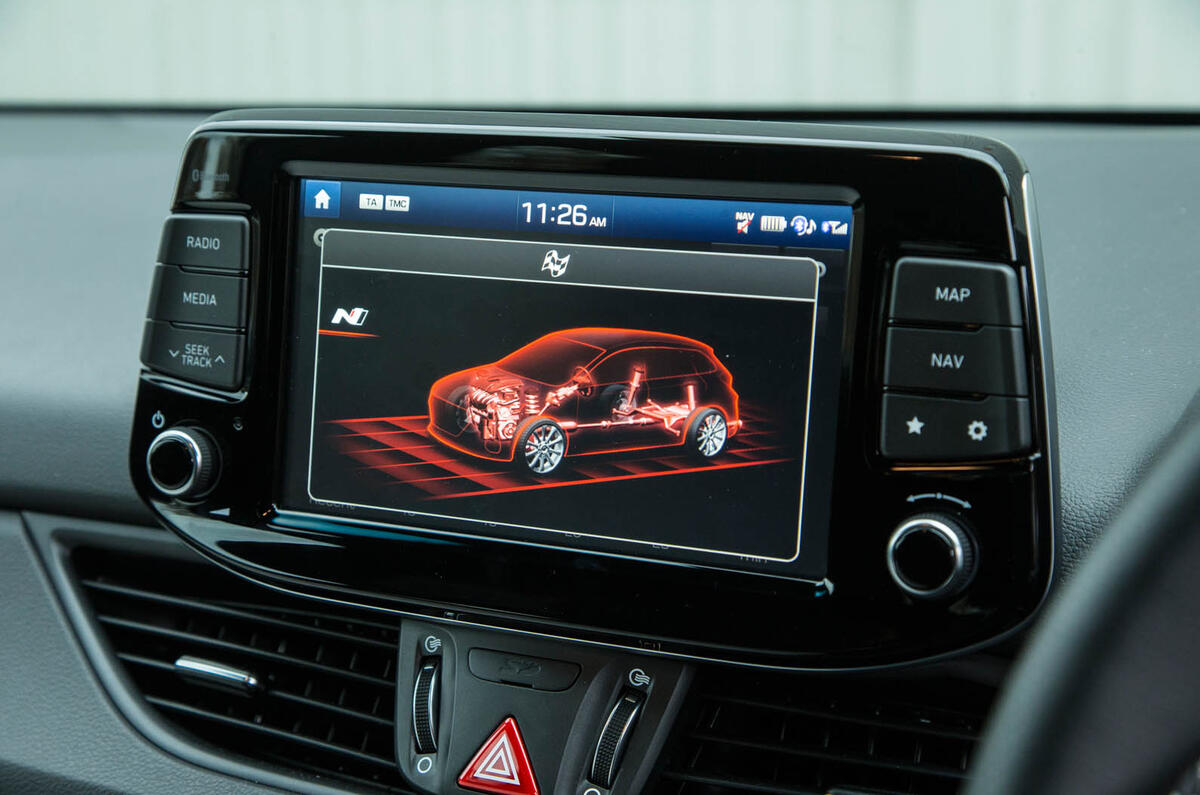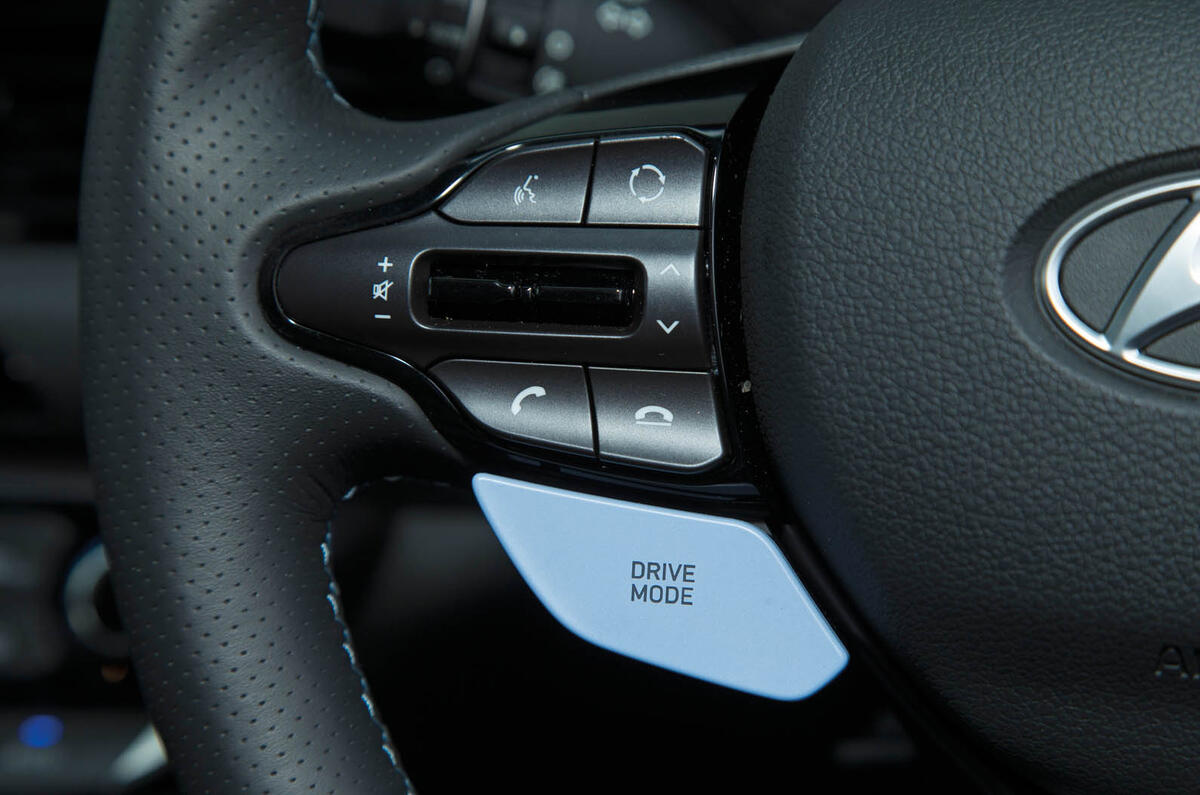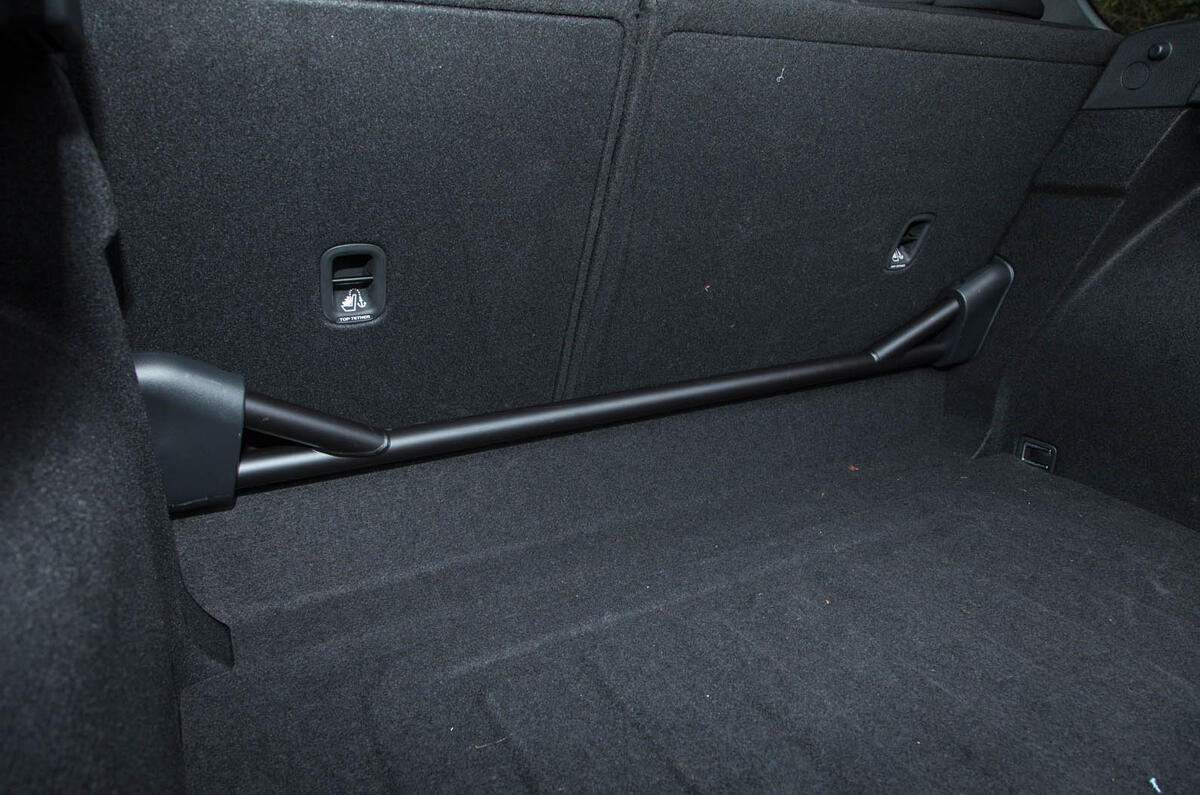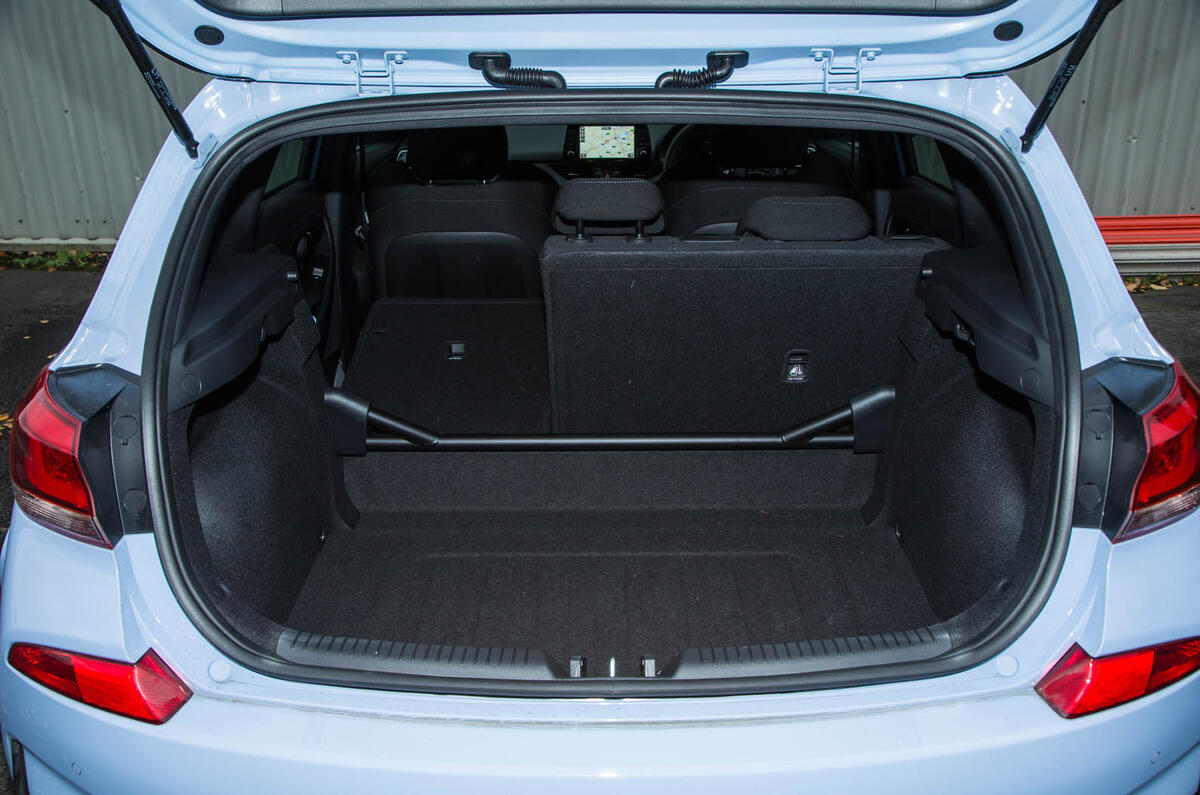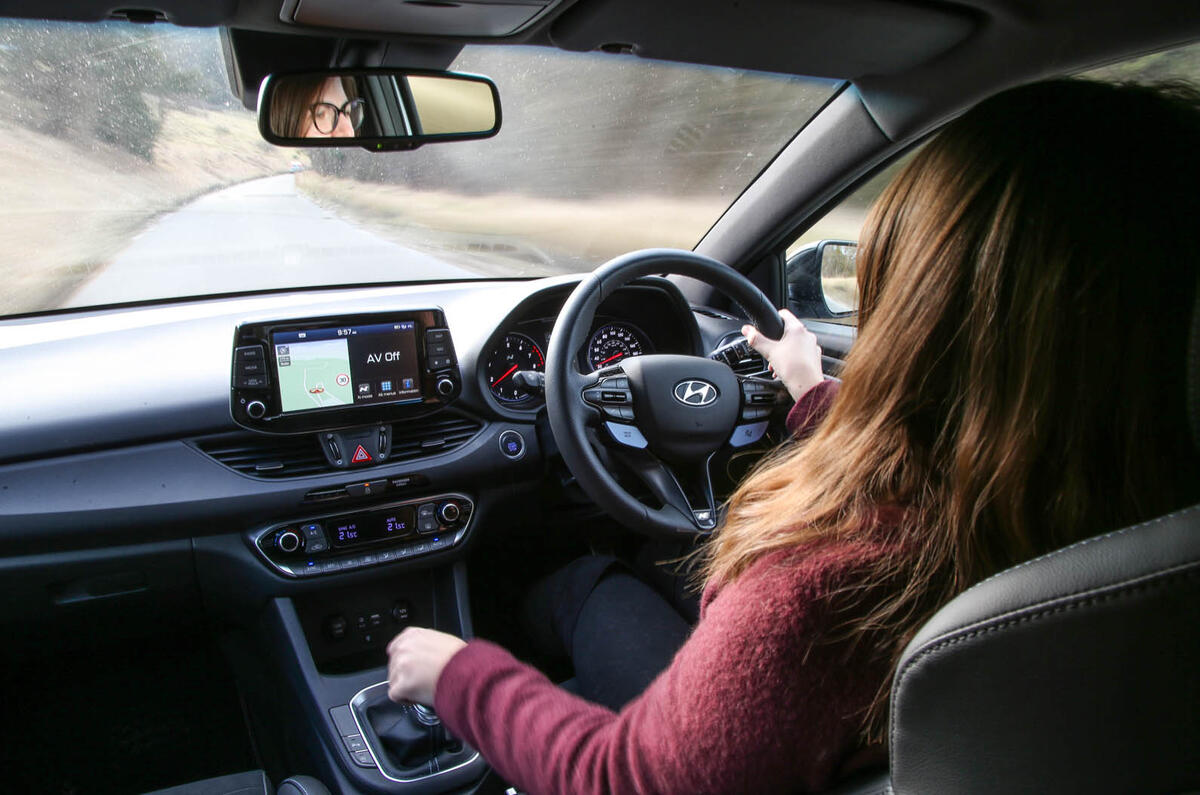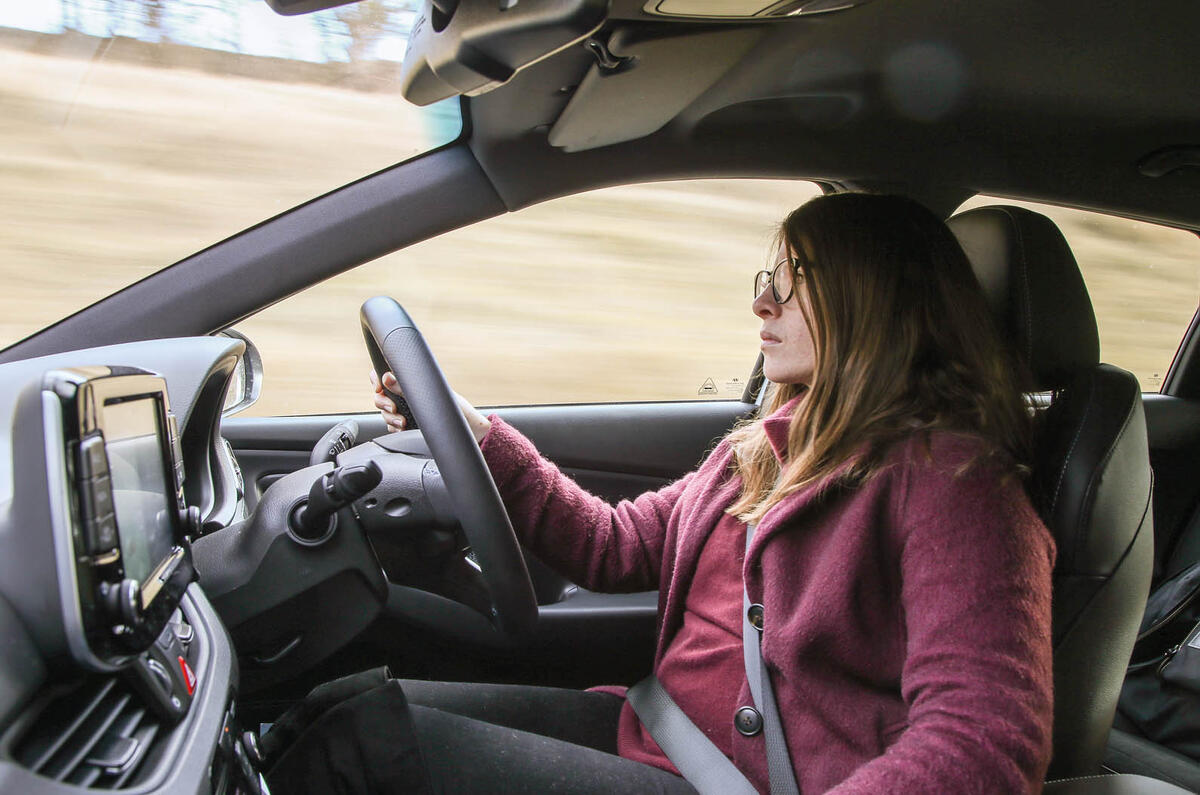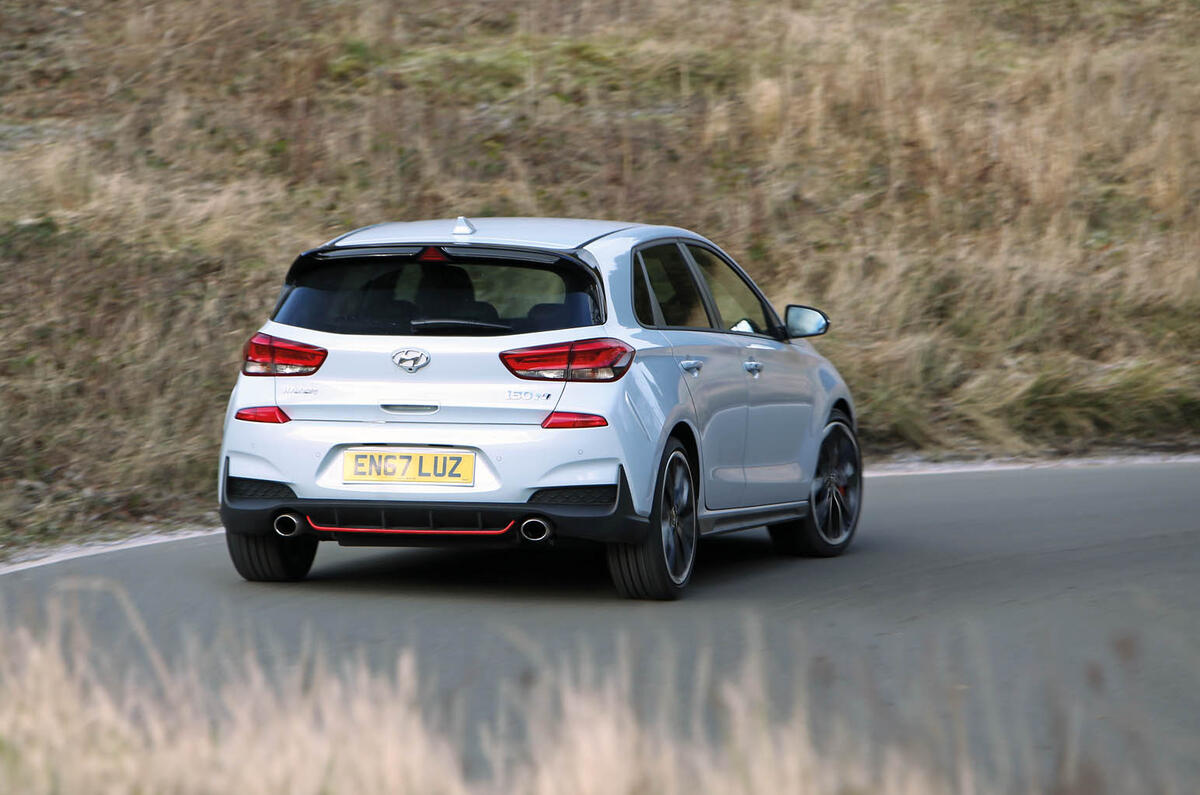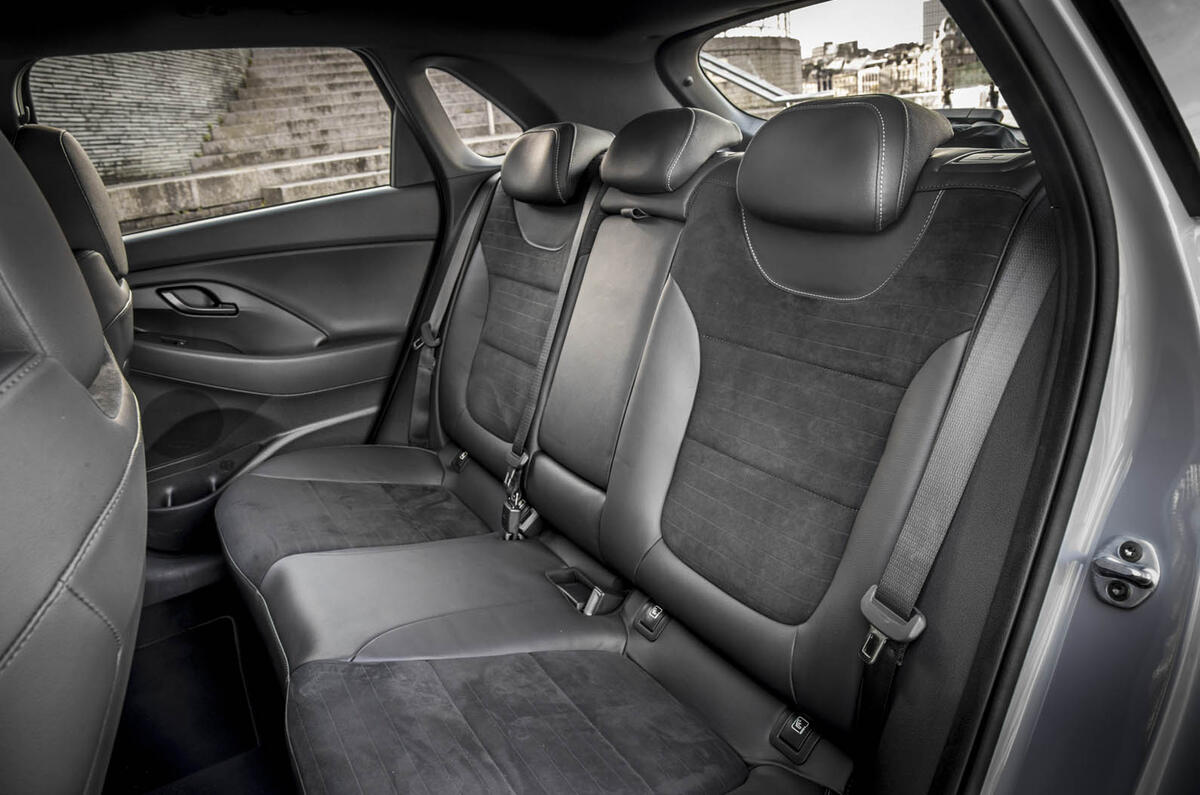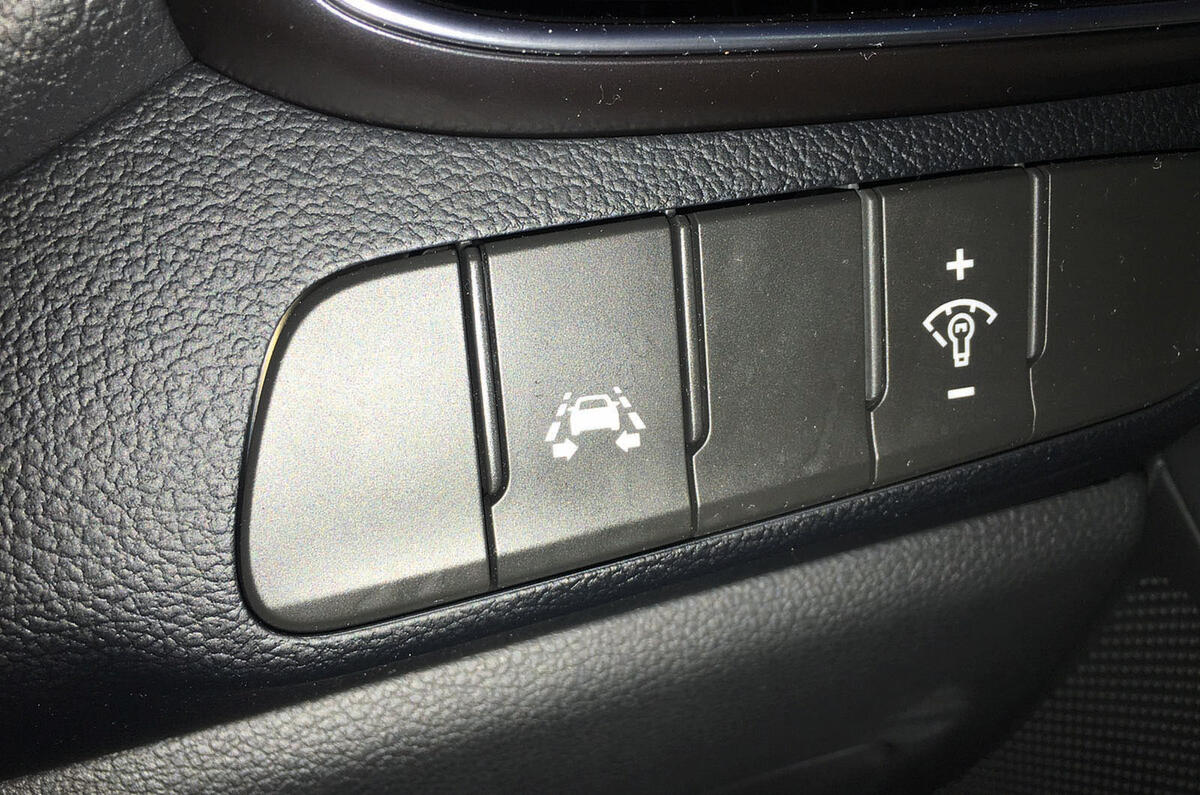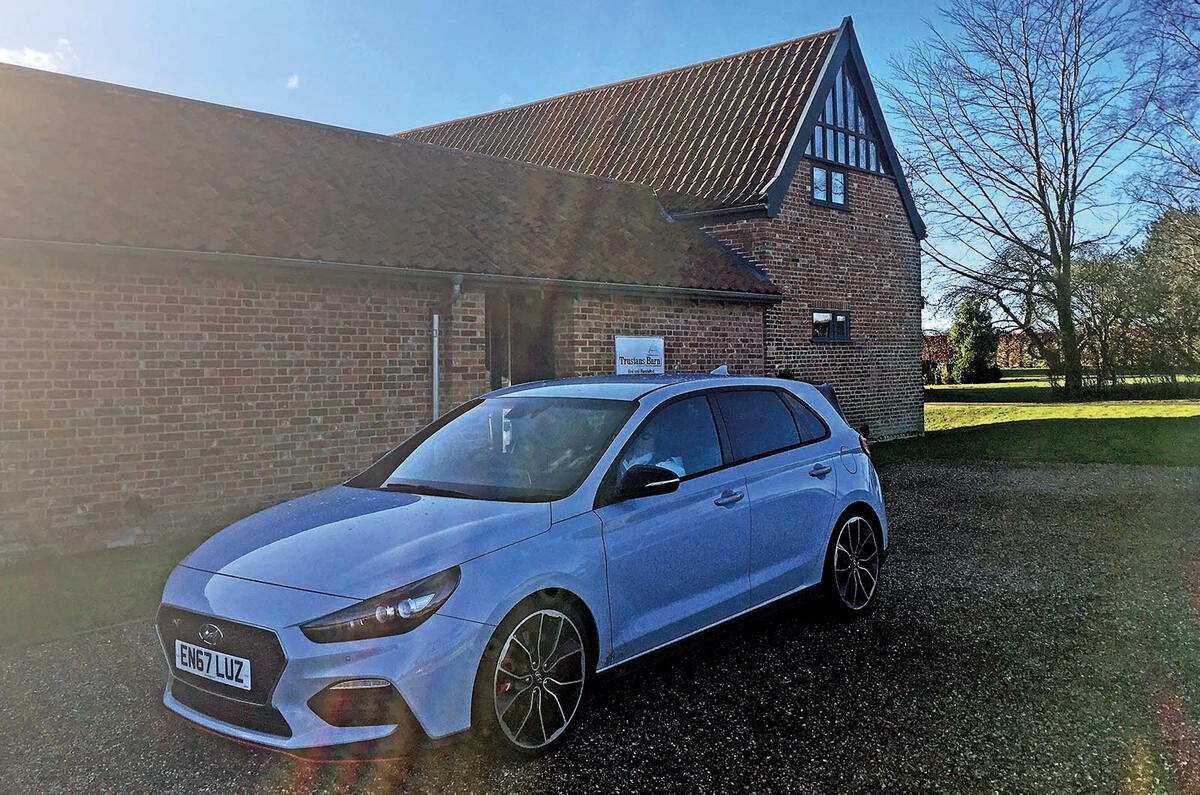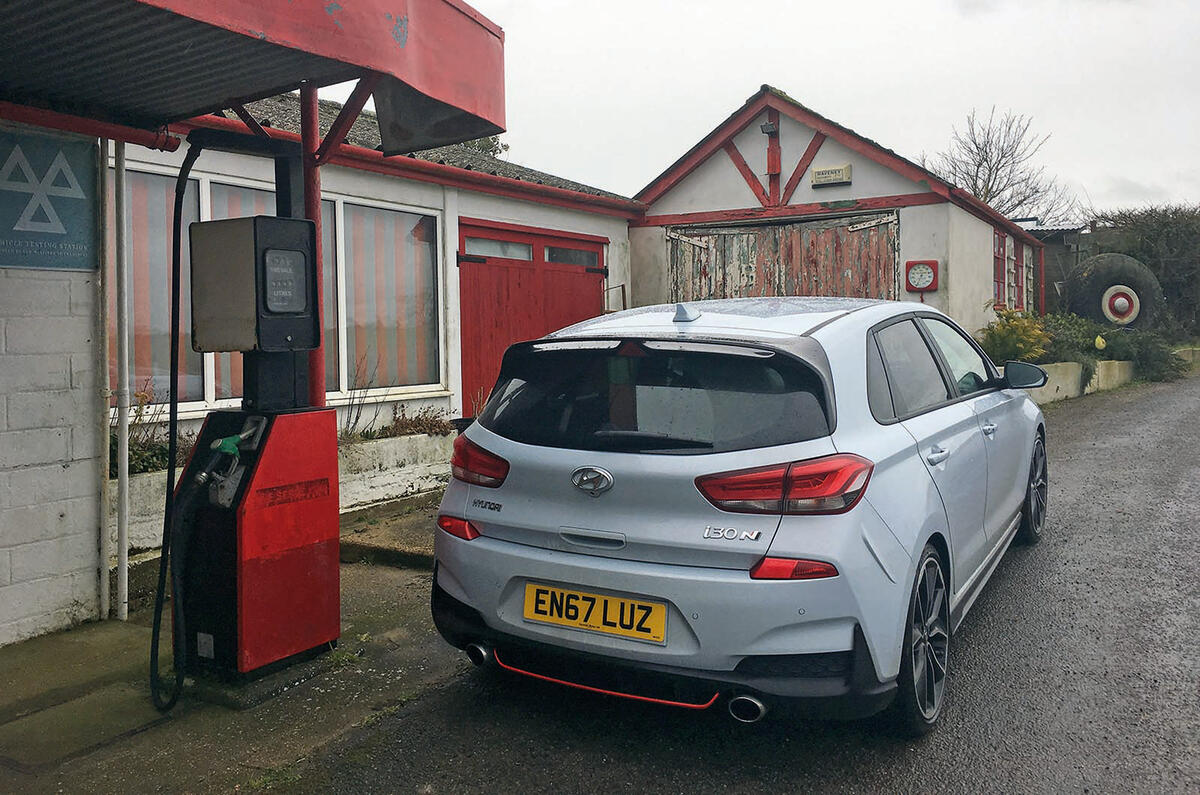Why we're running it: To determine whether Hyundai’s first stab at a hot hatch can stand up to its more established foes in everyday life
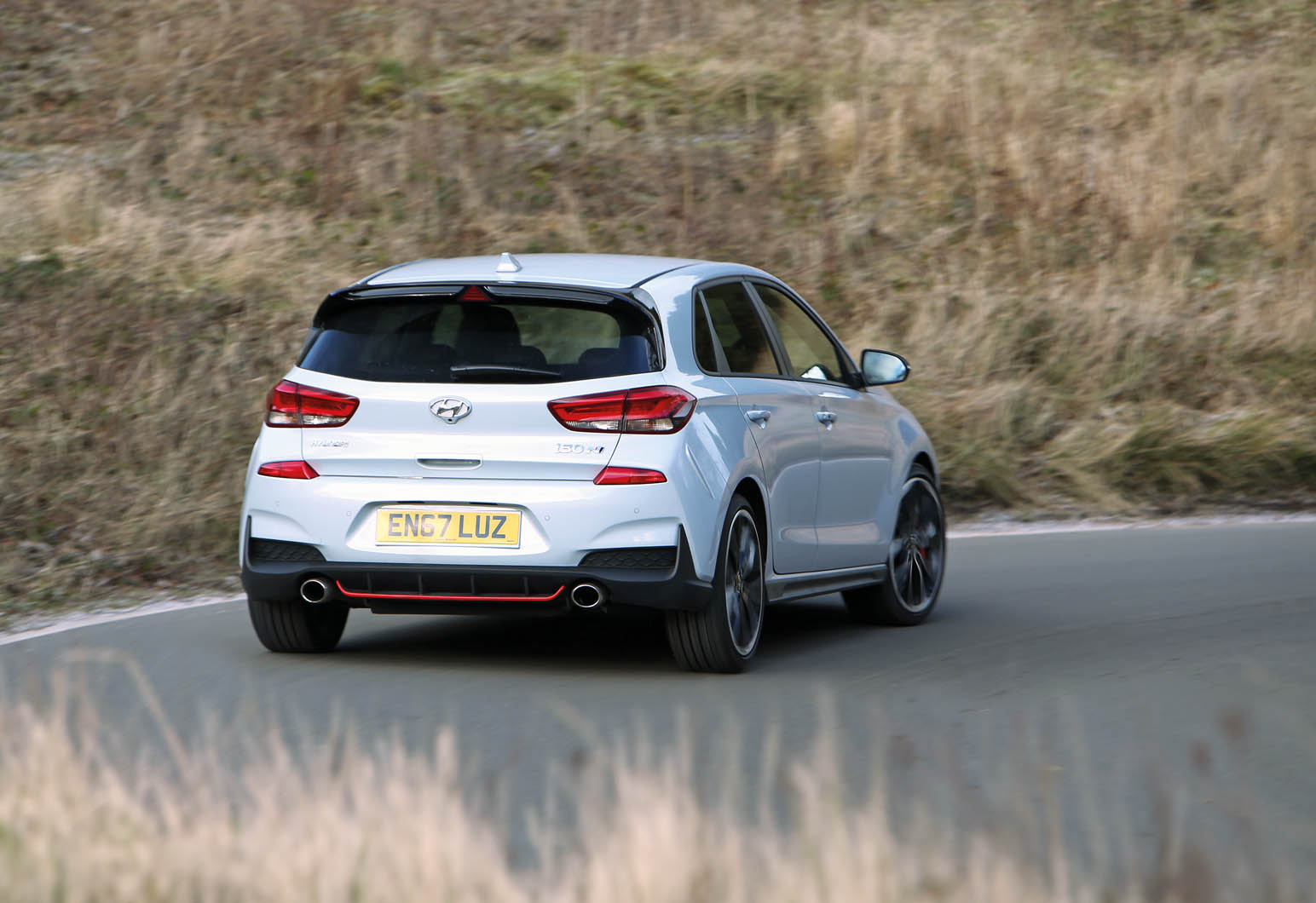
Life with a Hyundai i30 N: Month 3
Missing options join the line-up post-launch - 4th April 2018
In my last report, I bemoaned the lack of heated seats in an otherwise very usable day-to-day hot hatch. But I’m told that an optional £300 winter pack has been introduced for the i30 N and includes a heated steering wheel and front seats. If only I’d known before the recent blizzards. That aside, the front-wheel-drive i30 N coped with the snow admirably.
Mileage: 3022
Life with the Hyundai i30 N: Month 2
Leaving London behind for Suffolk’s B-roads, with mum co-driving - 21st March 2018
On a recent trip to Southwold, I had the choice of two cars: my i30 N long-termer or a Mk6 Volkswagen Golf 2.0-litre TDI.
I wanted the Hyundai, keen to stretch the car’s legs on plenty of windy Norfolk and Suffolk roads. But I also had my mum to consider and she favours (sensibly) heated seats and comfort, both of which the Golf could offer. The wonderful daughter that I am, we ended up taking the i30 N.
Having had the car for two months, I’ve enjoyed plenty of trips, but this was the first time I’d racked up a few hundred miles in one go and on a variety of roads, so I was intrigued to see whether it was as comfortable and practical as a standard i30 but perhaps with an added dose of fun – or should that be fuN?
First things first: it is missing the heated seats of my mum’s Golf – unfortunate for a brutal winter weekend by the seaside – but other than that, it fared very well. My mum summarised voluntarily: “It’s very smooth, it’s very quiet and it holds the roads very well around those tight bends.”
And in simple terms, that’s all true. On the first leg of our journey – all motorway and dual-carriageway A-roads – it was firm but pliant enough in standard mode, making it perfectly fine for a few hours on faster roads. It’s also relatively quiet.
Another thing I noticed on our long drive was the car’s lane-keeping assist feature steering for me, trying to keep me in the lane. It’s a feature on a number of cars these days, but it wasn’t something I expected in the i30 N, and some cautious testing revealed that it’s quite effective. The system won’t allow you to keep your hands off the steering wheel completely, but it does still provide a welcome break on some long stretches of boring road.
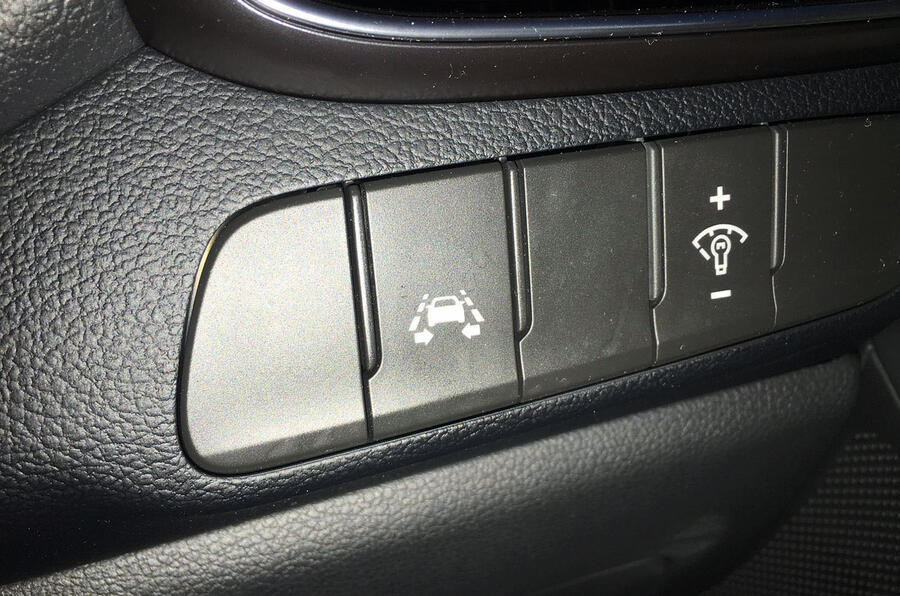
Once we arrived at some seemingly never-ending B-roads, the i30 N revealed a little more of its character. The heavy steering came to life, letting me dart into bends with really impressive grip from the front tyres.
What I’m enjoying most, though, are the accurate gearchanges, which are a joy, even in sedate, urban situations. On the open road in Suffolk, they were better still.
There have also been some interesting reactions on the road to the i30 N. It doesn’t attract the kind of unwanted attention that you might get in, say, a BMW 440i (I know from personal experience) but I’ve seen a handful of people react to it – either intrigued to know what it is or wanting to see how fast it goes.
My mum – who, I appreciate, is not the i30 N’s target audience – was surprised to hear it was a rival to the Golf GTI, which demonstrates that it’s quite sensible-looking for a hot hatch.
What she obviously missed was the satisfying exhaust note on start-up, which makes me smile and cringe in equal measure when leaving the quiet suburban street where I live. On a recent trip in the i30 N, our snapper Stan Papior, who is running a Honda Civic Type R, remarked how my car’s exhaust note was better than the Type R’s. Hyundai one, Honda nil.
Our weekend jaunt to rainy Southwold confirmed my early impressions, then. The i30 N has a dual character that makes it usable yet fun. It sounds boisterous and it can act boisterously if you want it to, but it can be well behaved too.
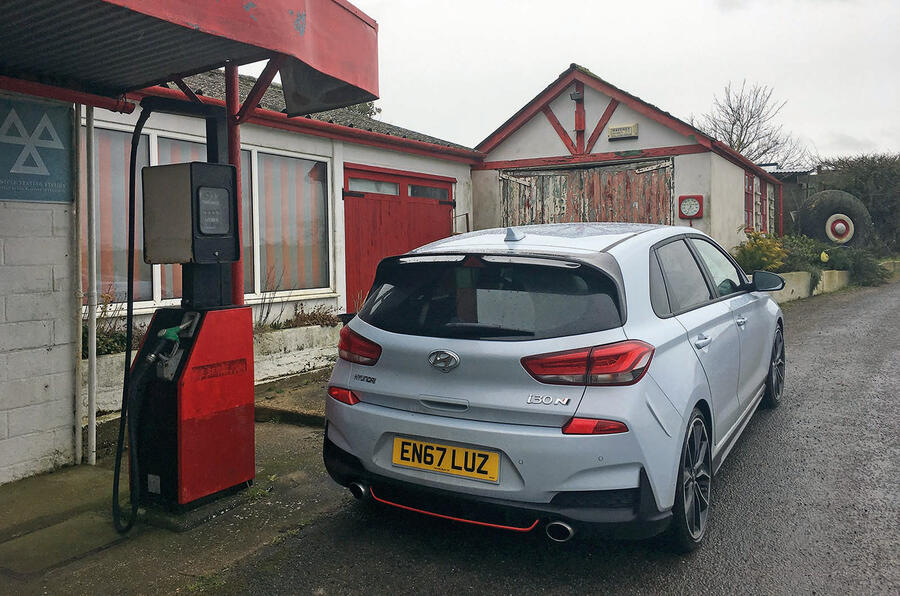
If that all sounds too sensible for Hyundai’s first hot hatch, then rest assured: putting it in N mode really ups the ante. The ride is crazy-hard (perhaps best left to the track, it’s that hard), the steering heavy and the exhaust pops and crackles on the overrun. More on that in a future report once I’ve explored it more.
And so there were no regrets about opting for the i30 N. The Golf would have made for a cheaper journey but, in every other way, the i30 N was a brilliant weekend getaway car.
Love it:
GEARCHANGES Incomprehensibly enthused about precise gearchanges, making even short, tedious journeys enjoyable.
Loathe it:
POSH WHEELS Not a car for tight parallel parking on high-kerbed streets. Alloys are so far unscathed, thankfully.
Mileage: 2071
Life with a Hyundai i30 N: Month 1
Welcoming the i30 N to our long-term fleet - 28th February 2018
First word of Hyundai’s N performance brand came more than four years ago and, since then, the Korean car maker’s presence in the World Rally Championship has ensured it has gained experience in, and received plaudits for, honing machines far removed from the good if unremarkable family cars for which it is better known.
Within a year of stating those performance intentions, Hyundai had appointed Albert Biermann as head of vehicle test and high performance development, with N no doubt dangled as the carrot to lure him away from the world of BMW M engineering. Ever since, Biermann has been busy developing this car, the i30 N – which will eventually be one of a range of N cars – as well as the Stinger GT of Hyundai’s sibling Kia.
It’s a bold move by Hyundai to attempt to launch a credible hot hatch in a world full of rivals with heritage: the Volkswagen Golf GTI, Peugeot 308 GTi and Honda Civic Type R are just three on that list.
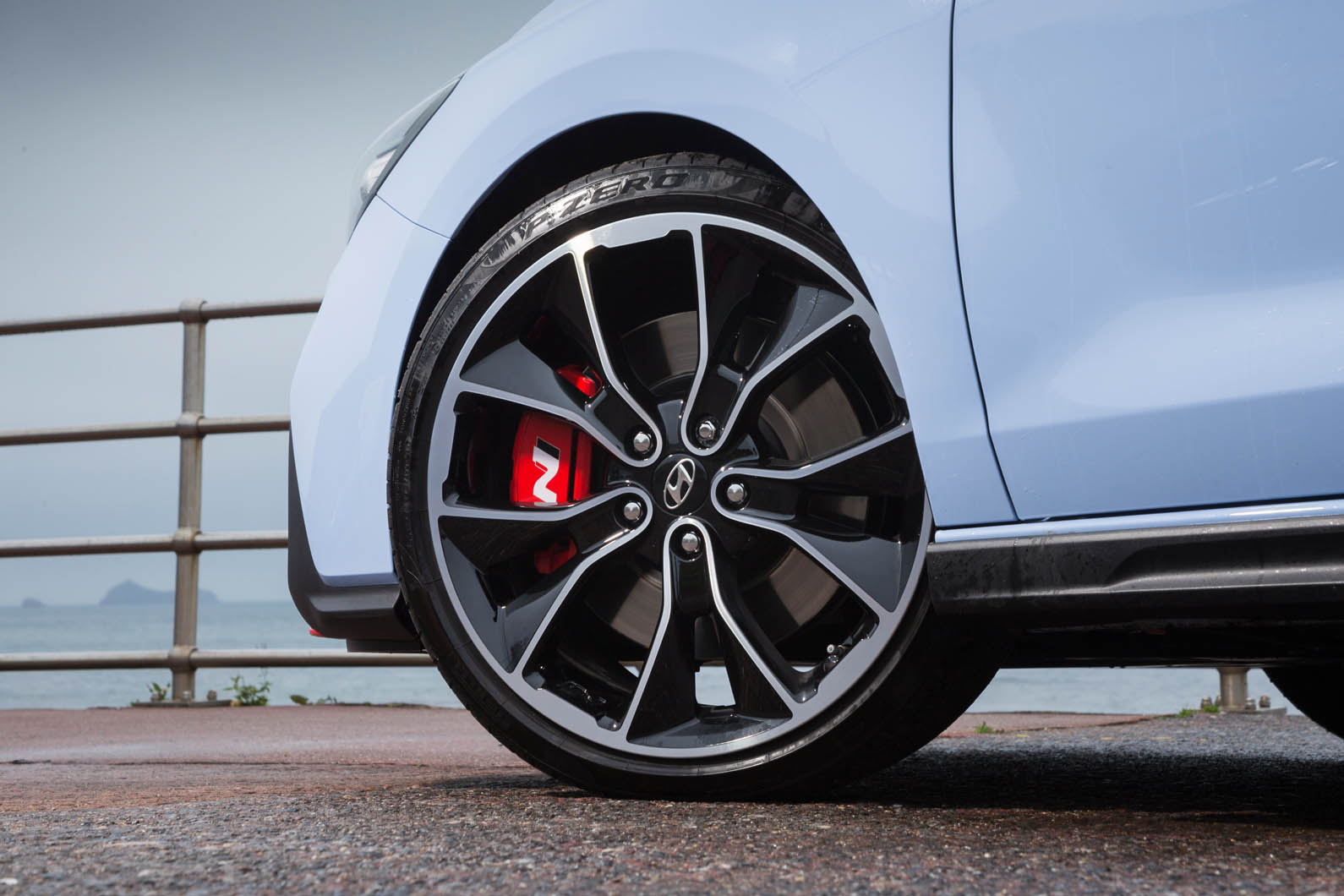
Early signs were good. Having been behind the wheel of a prototype i30 N early last year, road test ed Matt Saunders commented: “Hyundai is evidently very serious about its new performance ambitions, and about making a real, credible alternative driver’s car that deserves same-sentence billing with the hot hatchbacks we all know.”
Then late last year, we did a full road test of the i30 N. It received a solid 3.5 stars – respectable but placed behind four other hot hatches in our eyes: the Civic Type R, Seat Leon Cupra 300, Golf GTI and Skoda Octavia vRS. The verdict? “Its biggest failing is that the commitment evident in its mechanical make-up wasn’t quite matched to the expert chassis tuning it deserved.” There was much criticism of the most extreme setting of four (plus a custom one), called N mode, which was deemed near unusable, even on track, because of its rigidity.
Now we have the chance to drive an i30 N day in, day out for six months and expose it to the realities of life where track driving is an occasional treat rather than a weekly occurrence, and where the most potential joy will be found on rural driving roads away from base in suburban London.
We’ve opted for the more powerful i30 N, the i30 N Performance, because it’s expected to be the bigger seller of the two, which isn’t surprising given it still undercuts all of its rivals, costing from £27,995.
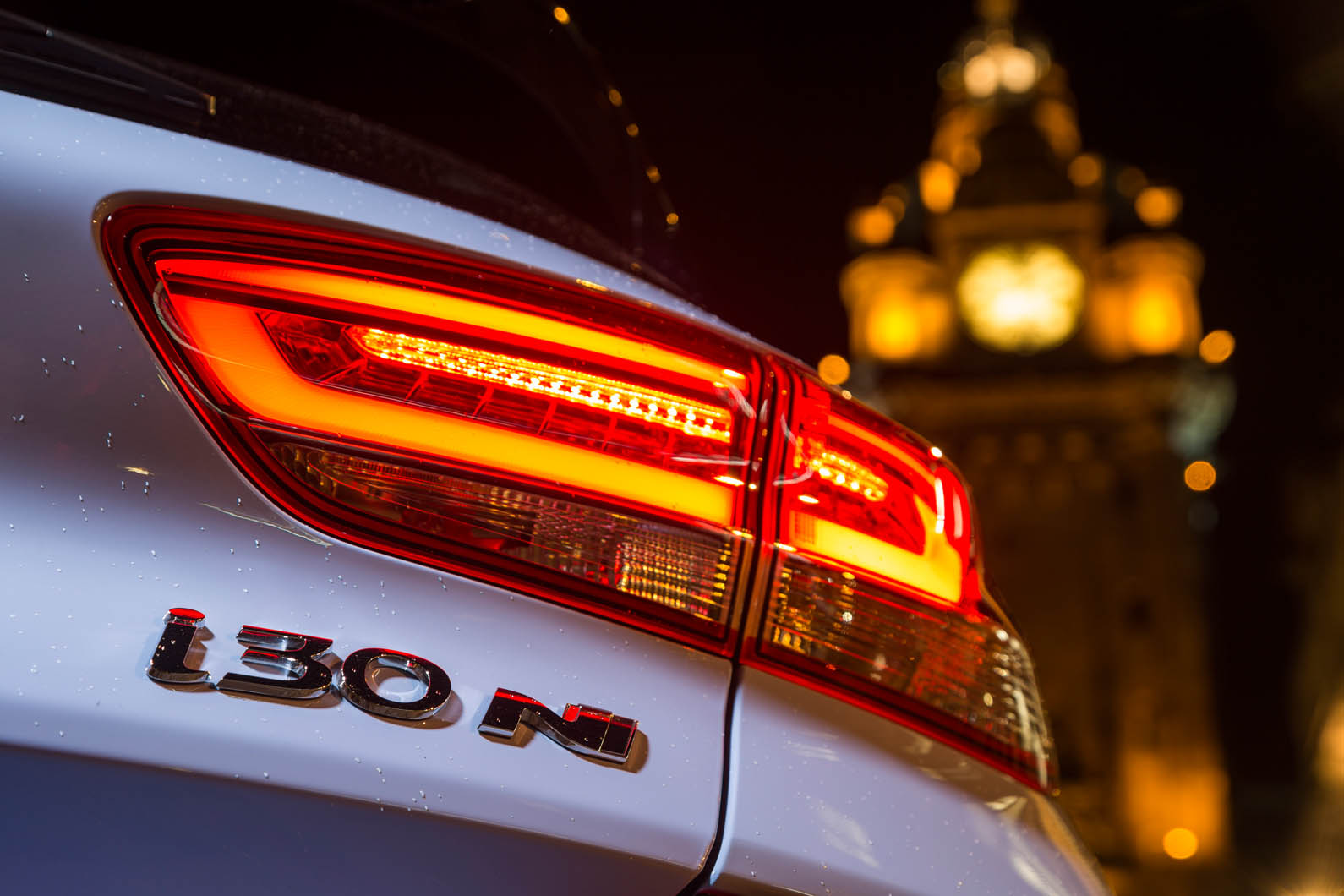
It uses a turbocharged 2.0-litre four-cylinder engine producing 271bhp (compared with 246bhp in the lower-powered version) and 260lb ft of torque – although it can reach 279lb ft on overboost between 1500rpm and 4700rpm – all of which is channelled through a six-speed manual transmission.
The i30 N Performance also adds an electronic limited-slip differential and a variable-valve exhaust. The car covers 0-62mph in 6.1sec, 0.3sec quicker than the standard i30 N.
Does it have many similarities to a boggo i30? Well, the bodyshell is the same, although the N gets underbody strut braces. There are wider wheel arches and the car sits 8mm lower. Then there are some styling changes – aggressive bumpers, deep intakes, a red pinstripe on the splitter and that gloss black rear spoiler plus some good-looking alloy wheels, in our case 19in with Pirelli P Zero tyres. The only option on our car is the £585 Clean Slate paint colour, which brings the cost to £28,580.
So far, it’s not my favourite-looking hot hatch, but it does tread a very respectable line between standing out against its standard i30 sibling (something the 308 GTi has failed at) and standing out too much (something the Civic Type R has failed at).
It’s also very well specified. Gear includes wireless phone charging, parking sensors, DAB radio, keyless entry, Apple CarPlay/Android Auto and sat-nav on an 8.0in touchscreen.
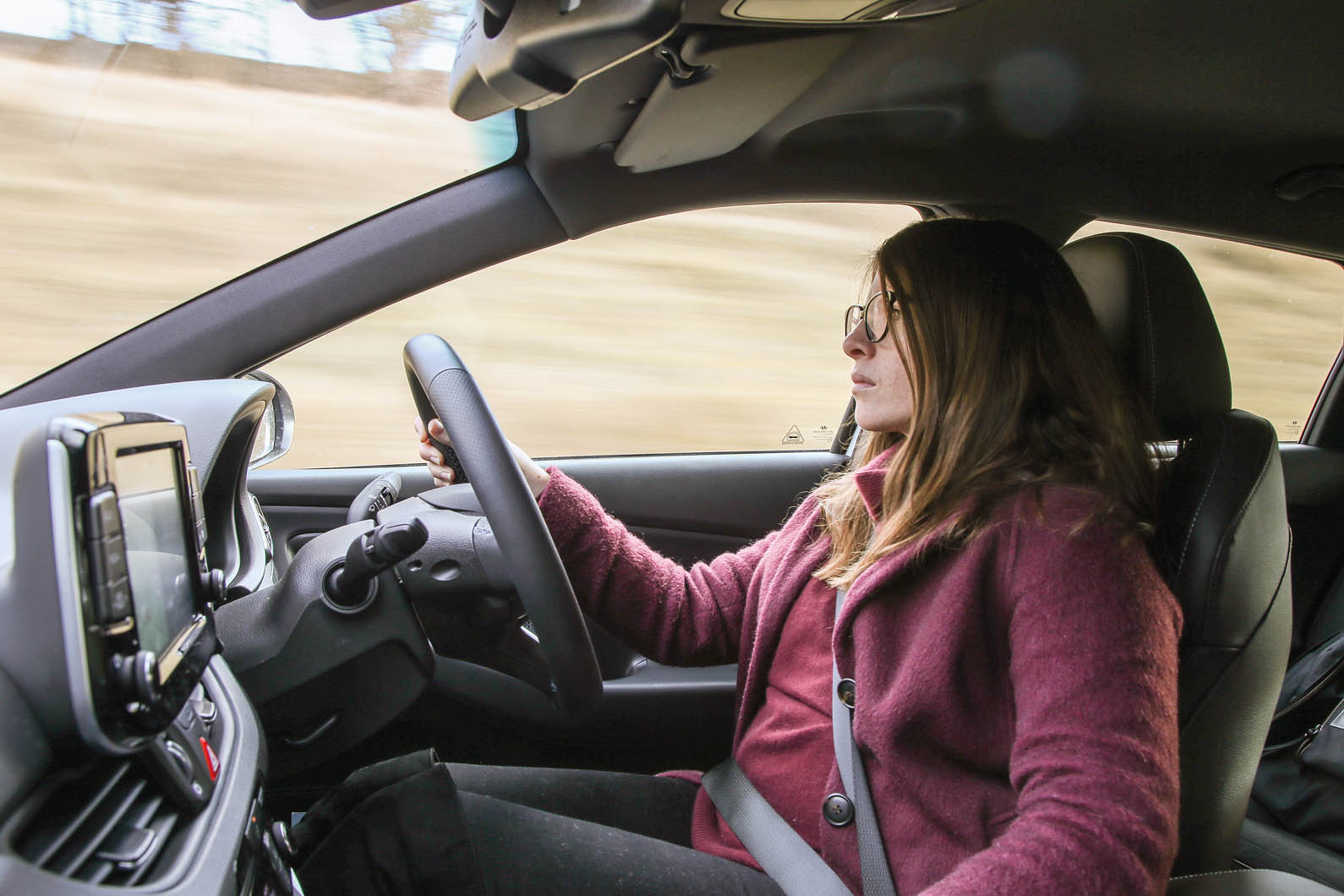
First impressions? Good and bad. Mostly good. But they can wait until my next report. One thing that has resonated was an unlikely encounter with a stranger as I returned to the i30 N in an Asda car park. Having been approached with an “excuse me” – which, as a true Brit, made me instantly wary – I was asked by this trendy youth if I knew if this was one of the first delivered i30 Ns. You see, he had ordered one, too, and had been told he’d receive it near the end of February. He said he had an i20 Sport and his dealer had suggested he wait for the i30 N rather than go for an i30 Sport.
He was incredibly excited, talked about the reviews he’d read (ours, naturally) and asked if he could wait around for me to turn the engine on to hear the blip. I obliged. This conversation impressed on me two things: how wonderful a chance encounter can be when there is a shared enthusiasm; and how brilliant that Hyundai has made a car that excites. Having expected most i30 N buyers to be conquest customers tempted to the brand by its hot hatch capability and affordability, this anecdote shows me there’s also plenty of scope for people already invested in it. Which, all in all, sounds very positive for Hyundai.
Second opinion:
Since driving a prototype i30 N on Hyundai’s test track, I’ve been intrigued to see if it would be as impressive on public roads as it was on a circuit. First impressions are good: sure, it’s a bit stiff but, in ‘normal’ mode, the ride isn’t overtly harsh. Press the ‘N’ button and it’s a different story...
James Attwood
Hyundai i30 N specification
Specs: Price New £27,995; Price as tested: £28,580; Options: Clean Slate paint £585,
Test Data: Engine 1998cc, turbocharged petrol; Power 271bhp at 6000rpm; Torque 260lb ft at 1450-4000rpm; Top speed 155mph; 0-62mph 6.1sec; Claimed fuel economy 39.7mpg;Test fuel economy 28.0mpg; CO2 163g/km; Faults None; Expenses None
